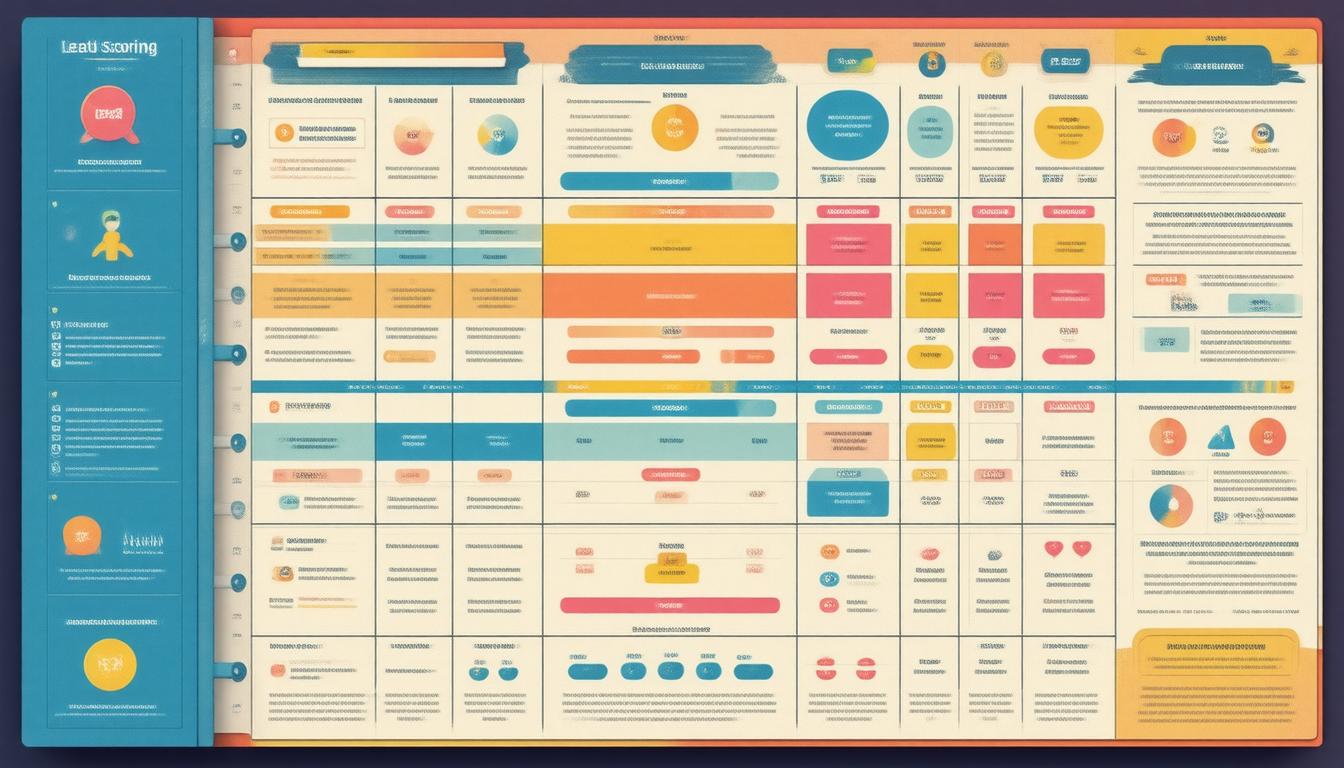In today’s competitive business landscape, effectively converting leads into customers is crucial for success. One of the most efficient ways to streamline this process is through lead scoring—a method that helps businesses identify and prioritize their most promising leads based on a well-defined set of criteria. In this guide, we’ll explore what lead scoring is, various scoring models, best practices, and how to implement an effective lead scoring system to maximize conversions.
What is Lead Scoring?
Lead scoring is a systematic approach to evaluating the potential value of leads—individuals or organizations that have shown interest in your products or services. This methodology involves assigning numerical values (or scores) to each lead based on their characteristics and behaviors, which reflect their likelihood to convert into paying customers. The scoring can be based on two primary types of data:
- Explicit Data: Information explicitly provided by the lead, such as job title, company size, and geographical location.
- Implicit Data: Behavioral indicators that showcase a lead’s interest level, including website visits, downloads, email opens, and social media engagement.
By categorizing leads from ‘hot’ to ‘cold,’ sales and marketing teams can better focus their resources on those most likely to convert.
Why is Lead Scoring Important?
In a climate where sales processes are becoming increasingly complex, lead scoring remains a vital tool for several reasons:
- Enhanced Sales Efficiency: By guiding sales efforts toward leads with higher scores, organizations can invest their time in leads that possess a greater likelihood of conversion, leading to improved sales outcomes.
- Improved Marketing Effectiveness: It helps marketers understand which lead characteristics are most valuable, enabling them to tailor their campaigns to attract higher-quality leads.
- Better Alignment Between Sales and Marketing: Lead scoring fosters a common language for sales and marketing teams, allowing for improved communication regarding lead quality and the effectiveness of campaigns.
- Increased Revenue: By prioritizing leads based on their scores, businesses can direct their resources where they will have the most impact, ultimately increasing conversion rates and revenue.
Lead Scoring Models
Understanding the different models of lead scoring can help you determine the best approach for your organization. Here are some commonly used models:
-
Ideal Customer Profile (ICP): This model involves scoring based on characteristics of existing high-value customers, helping to identify leads that closely align with your best customers.
-
Behavioral Scoring: Points are assigned based on how leads interact with your brand through actions like visiting specific product pages or engaging in social media.
-
Predictive Lead Scoring: Leveraging machine learning, this model analyzes historical data to forecast which leads are likely to convert based on past behaviors and trends.
-
Rule-Based Scoring: This approach assigns point values to specific attributes and actions, allowing businesses to create customized scoring systems tailored to their unique buyer profiles.
Each model can be tailored to meet your organization’s specific needs, ensuring that the scoring reflects the nuances of your target market.
Implementing a Lead Scoring System
To effectively implement a lead scoring system, follow these steps:
-
Define Your Ideal Lead: Collaborate with your sales and marketing teams to establish a clear definition of what constitutes a qualified lead, taking into account demographic and behavioral characteristics.
-
Assign Point Values: Determine the point values for various explicit and implicit factors. Ensure that positive actions (like form submissions) are rewarded with points, while negative actions (like unsubscriptions) lead to point deductions.
-
Utilize Technology: Use CRM and marketing automation tools that support lead scoring to streamline processes and keep track of lead scores accurately.
-
Monitor and Refine: Continuously analyze the effectiveness of your lead scoring model by tracking conversion rates and adjusting the criteria as necessary. This iterative process ensures that your lead scoring remains relevant and effective.
-
Train Your Teams: Provide proper training for sales and marketing staff so they understand the lead scoring model, enabling them to utilize it effectively in day-to-day operations.
Lead Scoring Best Practices
To maximize the effectiveness of your lead scoring system, keep these best practices in mind:
- Focus on the Journey: Recognize that lead scoring is not a one-time task. It is essential to adapt your scoring criteria as market conditions and buyer behaviors evolve.
- Collaborate Across Teams: Ensure alignment between sales and marketing teams when defining what qualifies as a high-value lead. This collaboration helps establish a coherent strategy that enhances conversions.
- Leverage Data: Continuously collect and analyze data to improve your lead scoring model. Utilizing both first-party and third-party data will yield richer insights.
- Test and Adjust: Regularly test and refine your lead scoring parameters to find the optimal combination that yields the highest conversion rates.
Conclusion
Lead scoring is an invaluable component of any effective sales strategy. By systematically evaluating and prioritizing leads, businesses can focus their efforts more effectively, ultimately increasing their chances of converting leads into loyal customers. Whether you decide to adopt a rule-based system, predictive analytics, or another model, the key lies in continuous evaluation and refinement to align with the changing dynamics of your market. Embrace lead scoring today and watch your conversion rates soar.
Do you want to take your career to the next step? Improve your earning potential? Grow your business? Let us show you what A.I. can do for you. Contact us today at [color=rgb(4, 53, 157)]office@fairbane.com.au[/color]. We serve every corner of the earth.


